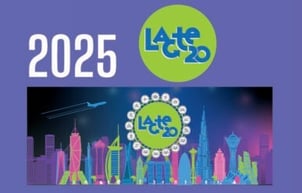This article was originally published on Exhibitionworld.co.uk
Events have a diversity problem. Up to 40 percent of events don’t have any speakers of colour in their panels, and while English is widely used, there’s a severe lack of options available for audiences from different countries, cultures, and languages.
It’s an issue that’s blocking people from engaging with content and other attendees from across the world, but the latest developments in immersive technology could provide a platform that levels the playing field.
From something simple as creating your own avatar to building a brand’s own virtual world, the metaverse is starting to offer radically new experiences in the events industry - not just how we attend events, but also in the way we interact with people.
The likes of JP Morgan and Goldman Sachs are predicting a more than US$1 trillion opportunity for the metaverse, while companies like Epic Games, Meta, and Microsoft have already been pumping millions of dollars into developing their own platforms.
The metaverse is hotly tipped to become the next big thing in events, so can it help remove cultural and language barriers to diversify audiences?
So, what does the metaverse for events look like?
The metaverse is a 3D virtual world where people can host and share digital experiences, which naturally makes it a good fit for the events industry. Although it’s not a new concept (the technology has taken almost 30 years to properly develop, mature, and come together), recent examples have taken the metaverse to a point where companies are seriously considering its use.
The reason for all the hype is the dramatic shift to online. While there are certainly benefits of hosting and attending meetings within physical structures, there is a real acceptance now that they don’t have to, or need to. Besides the obvious cost, travel, and time savings, virtual event platforms like the metaverse can also provide communication and engagement that matches physical experiences.
The metaverse is a breath of fresh air in this respect. Attendees can drop into a discussion on the fly, no matter where they are in the world - as long as they can properly engage with the content, that is. Separate breakout rooms where people can engage with each other on more specific topics can also be set up.
What’s impressive about the early examples of the metaverse is that it’s easily accessible through browsers. Sure, people can get a fully immersed experience through virtual reality, but the important thing is they don’t have to. The technology is also openly accessible on most PCs, laptops, and tablets, which is another important step in diversifying events.
And how does the metaverse increase diversity?
As the metaverse is still very much in its infancy, there’s a real opportunity to build and deliver platforms that prioritise diversity, accessibility, and inclusivity. That doesn’t mean providing one metaverse for everyone, but different, customisable experiences that are able to cater for all.
For example, while providing events in English might seem the obvious choice, three-quarters of the Earth’s population can’t actually speak it. By trying to cater to all, events are actually alienating a large proportion of potential attendees.
The ultimate goal of the metaverse is to build a digital platform which replicates many of the things we enjoy in the real world, but it should also be used to break down barriers to entry for groups that would have previously been denied access. By opening up discussions, we can make events more accessible to hundreds of millions of people that can’t interact with content due to disabilities or other impairments.
It can also be a way for attendees to express themselves through their avatars, for example. Participants are able to choose a broad spectrum of characteristics that they identify with, from skin colour and gender, to height and body size.
Supported by MootUp, Interprefy recently hosted its own event in the metaverse, with attendees able to customise their own avatar, mingle with other virtual attendees, and contribute to the session. But the significant advantage of the event was providing different language options, with attendees gaining access to live interpreters so that they could enjoy the show in the language of their choice.
If the metaverse is to become the platform of choice for events, cases like this have to be promoted. While being able to give users their own customisable avatar is fun, that alone won’t attract people to join in. But being able to listen in and virtually engage with a topic that they’re interested in? Now that’s an attractive proposal, helping diversify the events landscape.
And while we’re still trying to figure out what the metaverse truly looks like, it’s an exciting platform that could perform an important role in diversifying events – not just for different languages, backgrounds, and cultures, but for anyone that is struggling to properly engage with content and people online.
There are a lot of moving parts to the metaverse that are yet to be settled, but there is a very real opportunity for it to bring global, online communities better together.


-min.png?width=1040&height=800&name=SM%20LinkedIn%20Designs%20(1200%20%C3%97%20627%20px)-min.png)

 More download links
More download links



